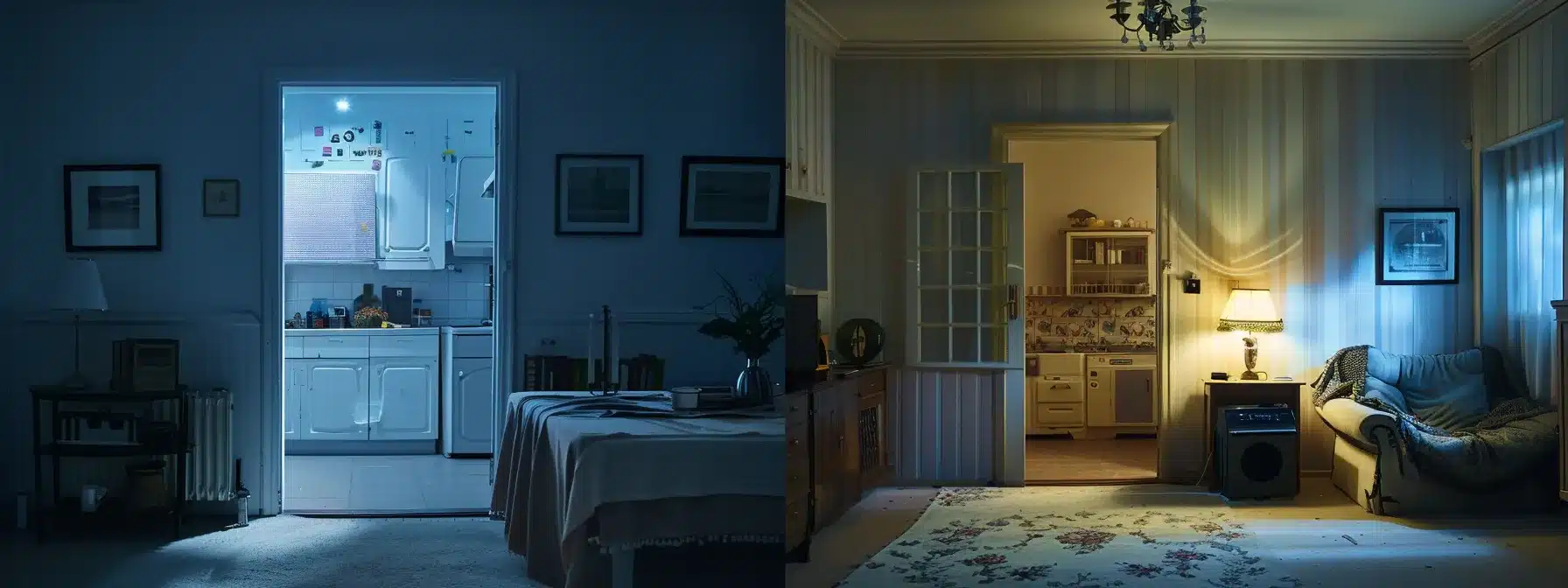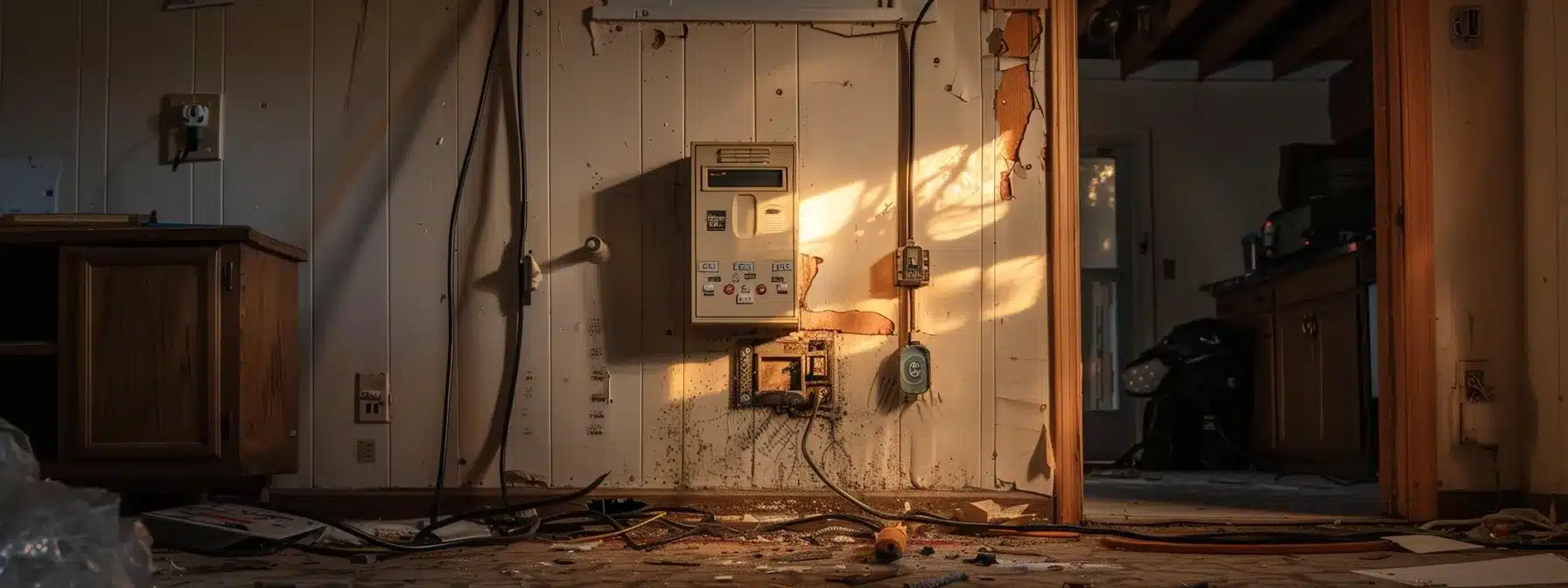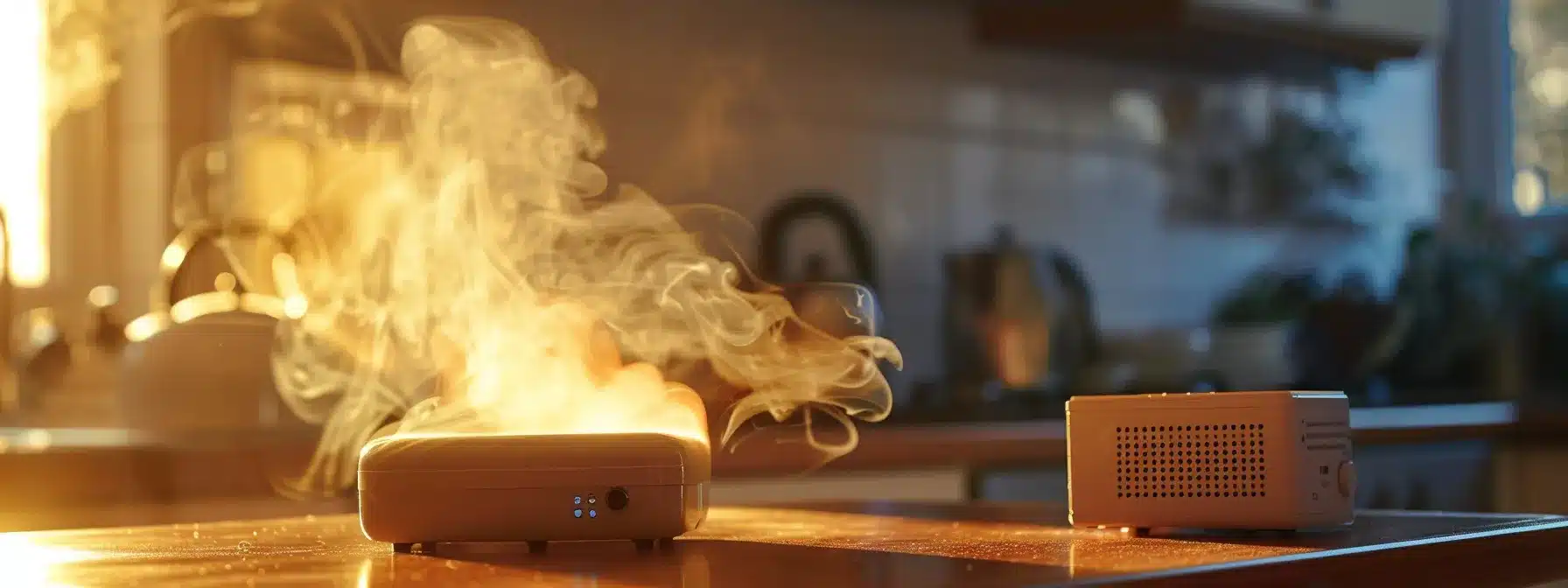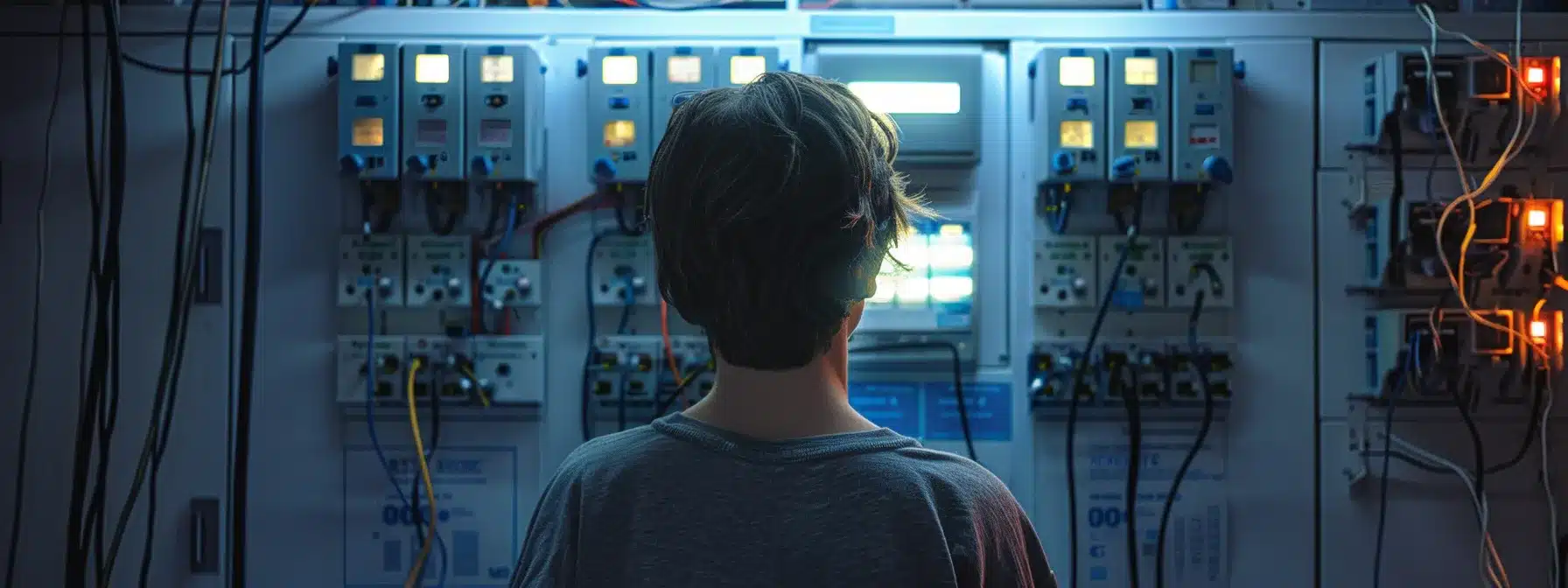Circuit breakers play a crucial role in keeping homes and businesses safe. When a circuit trips, it can be a sign of issues like overloaded circuits, short circuits, or even faulty appliances. Sometimes, factors such as corrosion or the failure of older systems can contribute to these frustrating interruptions, particularly during emergencies involving appliances like refrigerants or in areas prone to flooding. Understanding why these trips happen can save time, money, and stress. Keep reading to learn about the frequent culprits behind circuit breaker trips and how to manage them effectively.
Key Takeaways
- circuit breakers are crucial for preventing electrical hazards like fires or shocks
- regular inspections and maintenance can help avoid overloaded circuits and electrical issues
- identifying signs of appliance malfunction can prevent unexpected circuit trips
- upgrading old wiring ensures safety and efficiency in handling modern electrical demands
- using ground fault circuit interrupters enhances protection in moisture-prone areas of the home
The Basics of Circuit Breaker Tripping

Understanding circuit breaker tripping starts with knowing what “tripping” really means. When a breaker trips, it’s cutting off electricity to prevent hazards like electrical fires or equipment damage. Circuit breakers are the safety guards of any home’s electrical system, adhering to the national electrical code to ensure safety standards are met. They’re designed to protect wiring, often made of copper, from overheating and causing a power outage. Frequent tripping can indicate underlying issues that might require professional emergency electrician electrical services to address, ensuring everyone stays safe and sound at home.
Defining What “Tripping” Means for Electrical Safety
Circuit breakers are designed to trip when they sense a problem, acting as a safeguard to avoid dangerous situations. When a breaker trips, it stops the power supply to prevent overheating, which can lead to issues like fires or electrical shocks. Understanding this crucial function enhances a homeowner’s ability to maintain a safe living environment.
A common reason for tripping is a leak in the wiring or devices connected to the circuit. When excess current flows due to an arc fault, the circuit breaker steps in and shuts down the power supply. This form of protection saves homes from potential disasters while also ensuring ongoing electrical service.
Another notable reason for tripping is related to arc flashes, which can arise from connections that are loose or have become damaged over time. These flashes produce high temperatures and can quickly lead to serious consequences if the circuit breaker doesn’t respond. Knowing these triggers helps homeowners take proactive steps to ensure their electrical systems remain reliable and secure:
The Role of Circuit Breakers in Home Electrical Systems
Circuit breakers play a critical role in safeguarding home electrical systems by managing the voltage supplied to various appliances. When devices like hot tubs draw more power than the circuit can handle, the breaker trips, ensuring that the wiring doesn’t overheat. This function protects both the home and its occupants, showcasing the importance of having a reliable electrician on speed dial for any electrical issues.
As homes age, wear and tear on electrical components can lead to unexpected problems. The role of circuit breakers becomes even more vital in these situations, as they continuously monitor the electrical flow and respond to imbalances. Regular checks by a qualified electrician can help catch these issues before they escalate into safety hazards.
In addition to preventing overloads, circuit breakers also provide peace of mind for homeowners. Knowing that these devices can automatically shut off power during dangerous conditions allows residents to enjoy their home, including luxury items like hot tubs, without worry. Emphasizing safety in every aspect of electrical use is key to creating a secure living environment.
Understanding why circuit breakers trip is only the beginning. Next, let’s dive into one of the biggest troublemakers—overloaded circuits!
Overloaded Circuits: The Most Common Culprit

Electrical demands can set off a chain reaction that overwhelms circuits, leading to issues like tripping breakers. Homes often run various appliances, from compressors to entertainment systems, all drawing power at once. When too many devices operate simultaneously, it’s easy for the electrical system to become overloaded, causing overcurrent situations. Homeowners should be aware of the signs indicating a potential overload, such as flickering lights or buzzing outlets, which may hint at moisture or wiring issues. Regular inspections can help spot these problems early, ensuring that the system keeps running smoothly. Taking proactive steps to manage usage based on each room’s zip code and its unique electrical capacity can make all the difference in keeping everything powered safely.
How Electrical Demands Can Overwhelm Circuits
Electrical demands can quickly rise in homes, especially during peak usage times. With several devices running, such as lighting, appliances, and entertainment systems, the electrical system may struggle to keep up. This can lead to overheating, which puts undue strain on circuits and raises the risk of tripping breakers.
Homeowners should pay attention to how their electrical systems react when multiple devices are in use. Clusters of circuits working harder than intended can cause metal components to heat up, which might result in malfunction. Regular troubleshooting helps spot these issues before they escalate, making it essential to keep an eye on power usage and balance it accordingly.
The use of surge protectors can provide extra security against sudden spikes in electrical demand. However, if the overall load exceeds the circuit’s capacity, even surge protectors may not save the day. Finding ways to distribute electrical demands evenly across all circuits can significantly reduce the chances of tripping breakers and keep the home safe and functional.
Identifying Signs of Circuit Overload in Your Home
Households can often tell when circuits are overloaded by specific signs. Flickering lights or consistently tripped fuses and breakers indicate that something might not be right. If the wires feel warm to the touch or a strange buzzing noise emanates from the outlets, it could suggest that the load is too much for a circuit to handle.
Another telling sign of overload often comes from HVAC systems. If the air conditioner or heater is working harder than usual and frequently kicks on or off, it might be a result of overdrawn power. Ground issues or faulty insulators can also lend to an unstable electrical environment, increasing the likelihood of circuit overload.
Homeowners should also pay attention to a sudden loss of power across several devices connected to the same circuit. If appliances malfunction or stop working altogether, it may be the circuit’s way of signaling an overload. Regular inspections, especially for aging wiring or devices, can make a difference and avoid trouble:
- Inspect for warm wires or buzzing outlets.
- Check HVAC systems for unusual operating patterns.
- Monitor for frequent power losses across multiple devices.
Steps to Prevent Overloading Your Electrical System
To keep the electric current in a home running smoothly, homeowners should consider distributing their appliances evenly across multiple circuits. Avoid relying on one circuit to power too many devices simultaneously, especially high-demand items like refrigerators or air conditioning units. Moving some plugs around can make a big difference in preventing overload.
Regular maintenance of electrical wiring is another smart way to prevent overloading. Homeowners should assess their systems for any signs of wear and tear, ensuring all connections are secure, including those at light switches. If uncertain about the condition of the wiring, contacting a trusted professional can provide peace of mind—and a warranty on the work performed.
Setting a routine for electrical checks can help maintain a balanced load. This includes noting how many devices are plugged in at any time and jotting down concerns, which can be helpful when reaching out for professional guidance. For quick support, homeowners can easily send an email to their electrician‘s email address if they notice any unusual activity.
- Distribute appliances evenly across circuits.
- Regularly maintain and inspect electrical wiring.
- Keep track of devices plugged in for balanced load.
Overloaded circuits can put a real strain on your home’s electrical system, but there’s an even more alarming issue lurking beneath the surface. Short circuits can strike suddenly, creating a dangerous situation that demands immediate attention!
Short Circuits: A Dangerous Scenario

Short circuits can cause significant risks in any home, and recognizing them promptly requires a keen eye. Unraveling the causes of an electrical fault often comes down to faulty wiring, damaged heating elements, or overloaded circuits. Homeowners should remain attentive to any unusual signs in their environment, such as flickering lights or a sudden loss of energy in appliances. When a short circuit occurs, immediate actions like turning off the affected power source are vital to prevent further damage or hazards. Understanding these aspects helps keep homes safe and ensures that electrical issues are addressed before they lead to bigger problems.
Unraveling the Causes of Short Circuits
Short circuits often stem from a variety of factors, where faulty wiring tops the list. For instance, when wires come loose in a junction box or insulation deteriorates, they can touch each other, causing a sudden surge and a short circuit. Homeowners might notice peculiar behavior in their air conditioning systems or other appliances when these issues arise, often triggering breakers to trip.
Another common cause of short circuits is the electrical load exceeding the capacity of a circuit. When multiple high-demand devices are running at the same time, like air conditioning units, the system might not handle the strain well. This excess load can lead to heating in the wires and eventually a short circuit, which no one wants to deal with.
Recognizing Symptoms of a Short Circuit in Your Environment
Recognizing symptoms of a short circuit requires an observant eye. Homeowners should be wary of persistent flickering lights, which can often indicate an underlying issue with wiring. If the lights are dimming unexpectedly, it could be a sign that the electrical system isn’t handling the load properly, potentially leading to fire safety hazards.
Unusual noises coming from outlets, such as buzzing or crackling sounds, are another red flag. This noise can stem from damaged wires or issues with capacitors, hinting at a short circuit in the making. Ignoring these sounds can increase the risk of electrical injury and should prompt immediate investigation.
High-demand areas like the bathroom can also reveal signs of trouble. If multiple devices seem to malfunction when used together, such as hair dryers and straighteners, the circuit may be overloaded. Homeowners should always prioritize safety, seeking professional help at the first sign of these dangerous symptoms to prevent potential electrical disasters.
Immediate Actions to Take Following a Short Circuit
When a short circuit occurs, the first thing to do is stop the flow of electric charge by turning off the main power supply. This action must be swift to prevent any further damage to the wiring or appliances, like a dishwasher. Keeping a safe distance while handling electrical issues helps reduce the risk of injury from any unexpected sparks or overheating.
Next, it’s important to investigate what caused the short circuit. Homeowners should take a moment to examine the situation, possibly using a flashlight to look for damaged wires or faulty plugs that may not be visible at first. If there’s anything that seems out of the ordinary, calling a licensed electrician will help address possible problems, ensuring electrons flow safely throughout the household.
Lastly, after a short circuit, homeowners should avoid attempting any DIY fixes if they’re unsure of what they’re dealing with. Experimenting with electrical systems can lead to serious hazards. It’s wiser to prioritize safety and have a professional assess the situation to avoid potential injury and ensure that the home’s electrical system is back in working order without risks of another short circuit happening again.
As the sparks from short circuits fade, another threat lurks in the shadows. Ground faults can sneak up on unsuspecting homeowners, causing trips and potential hazards that demand attention.
Ground Faults: Another Reason for Trips

Ground faults often emerge as silent troublemakers, disrupting homeowners’ peace of mind and posing risks to electrical systems. Understanding how ground faults operate is key to grasping their effect on circuit breakers. These faults occur when electrical current diverts from its intended path, often due to damage or wear in wiring. This can make breakers trip unexpectedly, interrupting daily activities and necessitating prompt attention. A few smart practices can help mitigate these risks, keeping homes safer and more efficient. From ensuring proper installation during construction to regularly checking outlets, homeowners can be proactive in improving their safety. Keeping a close eye on appliances and having a ground fault circuit interrupter (GFCI) button installed can further enhance protection. Embracing these strategies helps shield homes from unnecessary electrical interruptions and enhances overall home improvement efforts.
Understanding the Mechanics of Ground Faults
Ground faults occur when electrical current strays from its intended path, typically due to damaged insulation or faulty wiring. This can lead to dangerous situations where the current flows into unintended areas, posing risks to both appliances and people. Understanding this can help homeowners recognize why their circuit breakers trip unexpectedly.
When a ground fault happens, it can create an imbalanced flow of electricity, causing the circuit breaker to trip as a safety measure. This automatic response not only protects the electrical system but also prevents potential electrical shocks or fires. Homeowners should appreciate the role of these devices in keeping their homes safe from such electrical anomalies.
The Impact of Ground Faults on Circuit Breaker Performance
Ground faults can significantly affect the performance of circuit breakers, often leading to unexpected trips that disrupt daily activities. When the electrical current strays from its intended path, the breaker senses this imbalance and automatically cuts off the power. This response is crucial in protecting both the electrical system and the individuals using it, as it prevents potential hazards from arising.
The consequences of ground faults don’t just stop at tripping breakers; they can also create long-term damage to appliances and wiring. Prolonged exposure to these electrical anomalies stresses the entire system, making it susceptible to wear and tear. Homeowners must remain vigilant and address any signs of trouble promptly to avoid costly repairs down the line.
Regular maintenance and quick action when issues arise can help maintain the integrity of a home’s electrical system. Homeowners should consider incorporating preventive measures, such as installing GFCIs in high-risk areas, to further enhance safety. Addressing ground faults effectively allows the home’s electrical system to function smoothly without the disruption of frequent tripping.
Key Practices to Avert Ground Faults at Home
Keeping the home safe from ground faults starts with proper wiring and installation practices. Homeowners should ensure that all electrical work is performed by a certified professional. Using high-quality materials can significantly reduce the risk of wiring failures that might lead to ground faults.
Regular inspections of electrical systems also help catch potential problems early. Homeowners should schedule periodic checks with a licensed electrician to look for signs of wear and tear in wiring and outlets. Simple maintenance can go a long way in preventing disruptions and ensuring a safer environment.
Installing Ground Fault Circuit Interrupter (GFCI) outlets in areas that are prone to moisture, such as kitchens and bathrooms, is another smart move. GFCIs are designed to trip when they detect any imbalance in electrical flow, offering extra protection where it’s needed most. Adopting these strategies can effectively keep homes secure from unforeseen electrical issues:
- Hire certified electricians for all electrical work.
- Schedule regular electrical inspections.
- Install GFCI outlets in moisture-prone areas.
Ground faults aren’t the only culprits behind electrical trips. Faulty appliances can also play a sneaky role in causing disruptions in your home!
Faulty Electrical Appliances and Their Influence

Faulty electrical appliances can be sneaky troublemakers that lead to those pesky circuit breaker trips. When an appliance malfunctions, it may draw more power than usual, triggering the breaker to shut off the electricity as a safety measure. Identifying defects and inspecting appliances regularly for potential hazards helps homeowners stay ahead of issues. It’s vital for residents to keep an eye out for frayed cords, strange smells, or unusual noises coming from their devices. Understanding how to safeguard the home against appliance-related trips not only enhances safety but also ensures that everything runs smoothly around the house.
How Defective Appliances Trigger Circuit Breaker Trips
When electrical appliances start acting up, they can easily become a pain in the neck. A faulty appliance often draws excess current, which causes the circuit breaker to trip. This safety feature kicks in to prevent any further damage, shutting off the power supply to protect the system from overheating or potential hazards.
Homeowners might find that their favorite appliances, like toasters or microwaves, can suddenly trigger breakers when they reach the end of their lifespan. Worn-out components inside these devices might resist the proper flow of electricity, leading to inefficiencies. This not only disrupts daily activities but also poses risks if left unchecked.
Keeping an eye on appliance performance is crucial for homeowners wanting to avoid unexpected trips. Strange sounds, burnt smells, or signs of wear can reveal that something’s wrong. Addressing appliance issues promptly ensures safety and keeps the entire electrical system running smoothly without unnecessary interruptions.
Inspecting Appliances for Potential Electrical Hazards
Regularly inspecting electrical appliances is key to preventing safety issues within the home. Homeowners should actively look for signs of wear and tear such as frayed cords, loose plugs, or any visible damage. Catching these issues early can help avoid potential tripping of circuit breakers and keep the household safe.
It’s also wise to listen for unusual sounds like buzzing or crackling when appliances are in use. These noises can indicate internal faults that may lead to overheating or other problems. If any appliance behaves differently, it’s time for an inspection and possibly a professional assessment.
Homeowners can create a simple checklist to stay on top of appliance inspections. This routine will help ensure that all devices are functioning safely and efficiently. Consider the following steps:
- Check for frayed or damaged cords.
- Listen for unusual sounds during operation.
- Inspect plugs for signs of wear or looseness.
- Evaluate performance by looking for inconsistencies in functionality.
Safeguarding Your Home Against Appliance-Related Trips
Homeowners can take simple steps to keep their electrical appliances in check and avoid trips caused by faulty devices. Regular maintenance is key, and this can be as easy as inspecting cords for frays or damage. By staying proactive, residents can catch potential issues before they escalate, ensuring a safer environment for everyone.
Creating a routine for appliance checks is another effective way to safeguard against unexpected trips. Homeowners should keep an eye out for unusual sounds or smells, which may indicate a malfunction. This regular attention helps in identifying potential problems early and ensures that devices operate smoothly without causing disruptions.
It’s also wise for homeowners to know when to call in the pros. For any appliance showing persistent issues, reaching out to a qualified electrician can prevent minor defects from becoming major headaches. Understanding when to seek professional help is part of keeping a home safely powered without the hassle of frequent circuit trips:
While faulty appliances can cause a lot of headaches, they’re just a part of the bigger picture. An aging electrical infrastructure lurks in the shadows, posing a hidden threat that homeowners often overlook.
Aging Electrical Infrastructure: A Hidden Threat

Aging electrical infrastructure can be a sneaky culprit behind unexpected circuit trips. Over time, wiring and components wear down, creating the perfect storm for problems. Homeowners might notice a pattern of frequent trips that often points back to old wiring struggling to keep up with modern demands. Recognizing signs like flickering lights, buzzing outlets, or warm wires indicates it’s time for an upgrade. When these issues arise, consulting an experienced electrician is a wise move. A professional assessment can reveal whether it’s time for a complete electrical overhaul, ensuring the home remains safe and efficient while handling everyday electrical needs.
The Correlation Between Old Wiring and Frequent Trips
Old wiring systems can create quite the headache for homeowners, as they often can’t handle modern electrical demands. With the rise of high-power devices like smart appliances and entertainment systems, aged wiring struggles to keep pace, leading to frequent circuit trips. The risk increases as the old components become worn and may not function properly anymore.
As technology evolves, many homes still rely on outdated electrical setups that were sufficient years ago. These systems may have lower amperage ratings, making them ill-equipped for today’s power needs. Homeowners might find that lights flicker or outlets buzz, which are clear signs that old wiring is reaching its limits.
To avoid unexpected power outages, it’s essential for homeowners to consider upgrading their electrical infrastructure. Hiring a licensed electrician to evaluate the current wiring can uncover potential hazards and determine if an upgrade is necessary. Keeping the electrical system up to date not only enhances safety but also improves overall efficiency in daily electrical use.
Signs That Your Electrical System Needs an Upgrade
Homeowners can often spot the need for an electrical upgrade by paying attention to their lighting. If flickering lights become a common occurrence, it signals that the existing wiring may not handle the current load properly. This issue can stem from either aging infrastructure or overloading, both of which warrant a closer look by a skilled electrician.
An increase in tripped breakers during regular appliance use can also indicate that the electrical system is outdated. Frequent interruptions can disrupt daily activities and suggest that the circuits simply aren’t up to the task. This kind of behavior should prompt homeowners to seek a professional assessment to ensure that safety isn’t compromised.
Unusual sounds coming from outlets or switches, such as buzzing or crackling, may signal hidden problems within the electrical system. These noises often suggest that something isn’t quite right, potentially due to deteriorating components. Homeowners should address these concerns promptly by consulting with an electrician to explore their options for an upgrade, safeguarding their home’s electrical functionality.
Consulting Professionals for Electrical System Assessment
Homeowners should take a proactive approach when it comes to electrical safety. Consulting professionals for an assessment not only identifies potential risks in the current system but also helps in understanding any limitations of older wiring. A skilled electrician can provide valuable insights that may prevent future problems, ensuring a safer environment.
During an assessment, licensed electricians can pinpoint areas that need attention and suggest necessary upgrades. They have the expertise to evaluate how well the existing infrastructure supports modern electrical load demands. By addressing these concerns early, homeowners can avoid the headaches associated with frequently tripped breakers.
Taking the time to consult with a professional can lead to a thorough understanding of the home’s electrical system. Experts can explain the importance of proper maintenance and how it contributes to long-term safety. With informed guidance, homeowners can make better decisions regarding repairs and upgrades, keeping their spaces secure and comfortable.
Conclusion
Understanding why circuit breakers trip is essential for maintaining a safe home. Frequent tripping often stems from overloaded circuits, faulty appliances, or aging wiring. Regular inspections and proactive maintenance can help homeowners identify and address these issues early. Staying informed about these culprits ensures electrical systems operate smoothly and safely.

